|
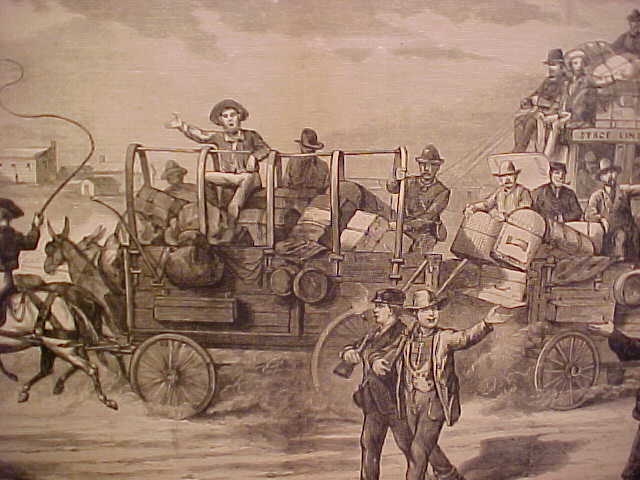
Cheyenne, 1877, Woodcut, Leslies Illustrated News
The above depicts a freight wagon heading off for the gold rush in the Black
Hills of Dakota Territory and is the center section of the woodcut on the
preceding page. Note that the wagon is tandem. The horses pulling the wagon are depicted in the next panel
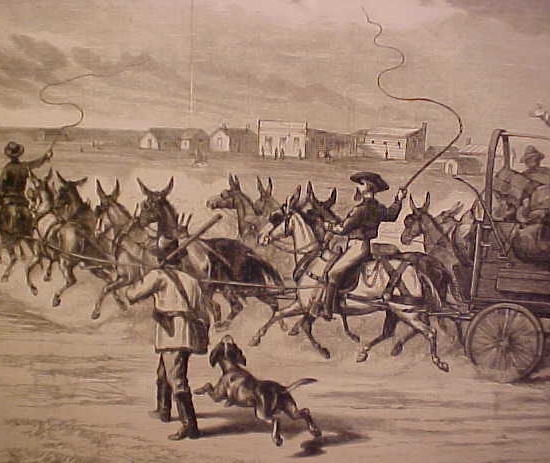
Cheyenne, 1877, Woodcut, Leslies Illustrated News
Not all was, however,
was rough. By the 1870's Cheyenne had put behind it a reputation of being a tent city.
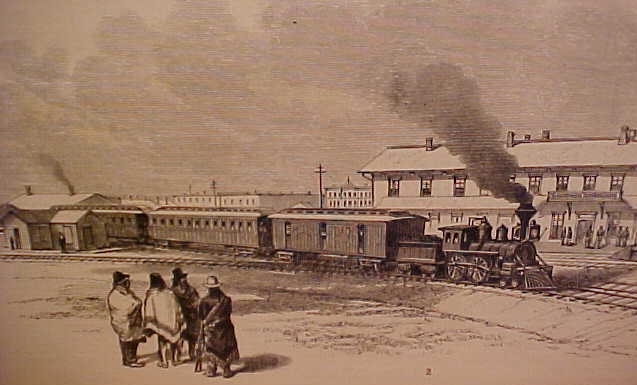
Union Pacific Depot, Cheyenne, 1877, Woodcut, Leslies Illustrated News
In the front is depicted
the Union Pacific Depot and Hotel. In the center background is the Inter-Ocean
Hotel, owned by Barney Ford and futher discussed on later Cheyenne Pages. Next
panel is another view of the Inter-Ocean.
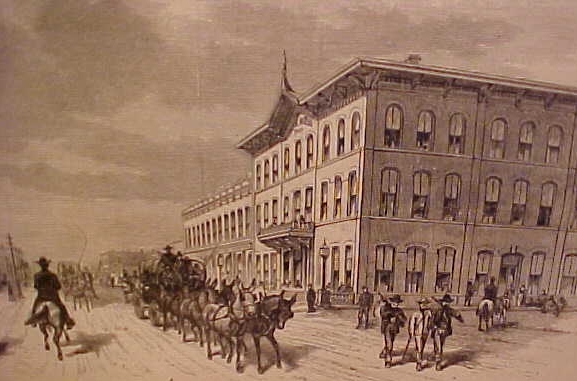
Inter-Ocean Hotel, Cheyenne, 1877, woodcut,
Leslies Illustrated News
Rapid transportation via railroad rapidly made Cheyenne, as indicated in the next views, a sophisticated city rivaling Denver,
indeed, in some ways more modern and sophisticated. As an example,
in 1882, the city was the first in the nation to illuminate its streets
with the newly invented electric incandescent lamps.
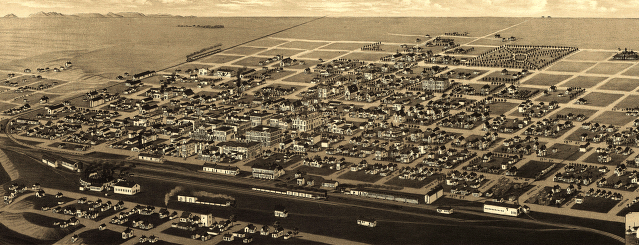
"Bird's Eye"
view of Cheyenne, 1882, close-ups next page.
Indeed, during the decade between 1860 and 1870, Denver grew hardly at all and with the coming of the
Railroad to Cheyenne, some business persons moved from Denver to Cheyenne. The concern in Denver was that
it would be left high and dry and that Cheyenne would become the Queen City of the Plains and Mountains.
As a result a number of Denver businessmen formed the Denver-Pacific Railroad and Telegraph Company
to connect Denver to the UPRR at Cheyenne. The first train pulled into Denver in 1870.
Cheyenne Photos continued on next page.
|